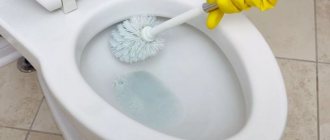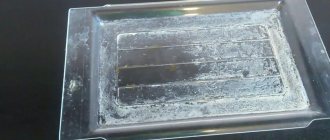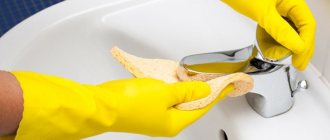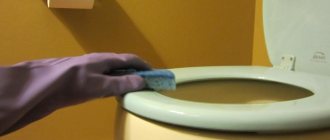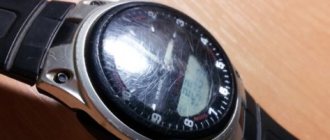An aquarium is not only a magical world of decorative fish, snails and algae, it is an integral part of most modern interiors. And in order for an aquarium to delight its owner with beauty and sophistication for a long time, it is necessary to maintain certain conditions in it with the help of all kinds of compressors and filters, special lighting and a hydraulic supply system. In addition, timely and proper cleaning of the aquarium is a prerequisite for its maintenance.
Causes of plaque
First, it’s worth getting acquainted with the causes of limescale. As a rule, this is excessively hard water, which contains a lot of magnesium and calcium salts. Factors contributing to the accumulation of water stone are:
- lack of aquarium flora or its absence;
- adding feed too frequently;
- use of water without preliminary settling;
- irregular care;
- lack of a filter or its low quality.
If you take into account all the listed nuances in time, you can avoid the appearance of a large number of deposits.
Important! It is impossible to use water completely devoid of minerals; it disrupts the ecological balance of the aquarium and leads to the death of fish and vegetation.
Caring for the bottom of an aquarium using a siphon
In order to clean a glass container with water, there is no better device than a siphon, which consists of a tube and a pump. There is a tip at the end of the tube of this accessory. It is used to lift the soil and remove waste products of fish and plants.
The soil needs to be cleaned less frequently than routine cleaning. During general cleaning of a glass aquarium, not only the soil is cleaned, but also the sand. The sand is cleaned using a tube. After this procedure, the siphon should be thoroughly rinsed.
Siphon cleaning
How to clean the walls of an aquarium and what products to use
However, even the most prudent aquarists cannot avoid the need to regularly remove plaque. For this purpose, there are three main methods, which include the use of special or folk remedies and mechanical cleaning.
Special means
This category includes specially developed cleaning compounds. These can be impregnated wipes, sprays or solutions. They allow you to clean without harming flora and fauna. To this list you need to add softeners, which allow you to remove traces of calcium without replanting the inhabitants and draining the water. An example of such means is:
- Tetratec is a set of wipes impregnated with components that dissolve lime and green deposits;
- Aquarium Pharmaceuticals Safe and Easy, spray for cleaning glass and acrylic surfaces from traces of calcification;
- Aquayer, one of the softeners, when placed in the filter neutralizes calcium salts, reduces the level of hardness, is not recommended for long-term use, after 45 minutes it should be removed from the filter.
The first two options require completely emptying the container. After draining and replanting the fish and plants, the walls of the container are treated with the selected product, left for a few minutes, then the chemicals along with any remaining contaminants are washed off with running water.
Important! Despite the advertised safety of special compounds, after treating the internal cavity with them, the remaining substances must be completely washed off. Its accumulation can harm aquarium inhabitants.
Folk remedies
If special chemicals are not available, there is always the option of using cleaners prepared at home from improvised materials. The most popular products for decalcification remain acid-rich lemon and vinegar, to which ammonia is often added:
- instead of fresh lemon, citric acid is often used, it is also effective against calcium deposits; to prepare a solution, 20 grams of the substance are diluted in a glass of water and stirred until completely dissolved;
- vinegar, composition similar to 200 grams of water, tablespoon of product with 9% concentration, for application you can use a spray bottle or a clean cloth;
- ammonia, alcohol is diluted in a ratio of 1:10 and mixed thoroughly, the application procedure is the same;
- Another effective folk option is the use of peroxide, the substance is diluted in a ratio of 30 ml per 100 water.
The application procedure differs little from that described above. Since all compositions are prepared in the form of liquid solutions for application, it is most convenient to use spray bottles.
Important! Some types of household cleaners can be a burn hazard; for example, when working with vinegar-based solutions, it is recommended to protect your hands with gloves.
Home care methods
We clean the glass from plaque and greens with a sponge, a brush, a magnet and a scraper
First of all, always clean the walls of the aquarium, which very often become covered with brown or green spots. This can be done with various devices, in particular scrapers.
Such devices are especially relevant in the presence of large-volume aquariums. There are three types of scrapers :
- A scraper with a soft, sponge-like surface. It has a long handle and is convenient for cleaning glass in medium-sized containers.
- Metal scrapers. The design includes a special knife for aquarium glass. Often there are double-sided models, with a sponge on the back side.
- Magnetic scrapers. Consist of two parts, with built-in strong magnets. Such devices are very convenient, but remember that they should be used with extreme caution. One grain of sand caught under the scraper and the walls of the aquarium will be irreversibly scratched.
Most often, they wash the walls using ordinary dish sponges. The hard side of such a sponge will help wash away heavy dirt, while the main dirt will be easily washed off with the soft side.
Another thing that is indispensable when cleaning an aquarium is an ordinary toothbrush . It allows you to thoroughly wash seams and objects with small parts.
Important! If your aquarium “goes green” too often, eliminate the cause of the intense growth of algae: resettle the fish, reduce the amount of light entering the pond, change the water more often.
We clean the bottom with a siphon, and without it
Cleaning the soil is the most labor-intensive process. In the first month after moving in, it is not necessary to wash it, but over time, pollutants accumulate in the soil - particles of food, fish feces, which begin to rot and release hydrogen sulfide, which is toxic to aquatic life.
This procedure can be carried out in two ways:
- Using a siphon.
Using a cylinder - a funnel, stir up the soil, this will lift contaminants from the bottom and draw them into the siphon with the flow. Heavy soil will quickly fall into place. After clean water begins to appear from the pump tip, move on to the next section of soil.
After treating the entire surface, add fresh water. In the first hours it will be somewhat cloudy, but soon the suspension will settle and transparency will return.
And yes, siphons also have an automatic battery-powered model.
ATTENTION! If the entire bottom is covered with plants, cleaning with a siphon is not carried out.
- Cleaning without using a siphon is carried out for various reasons. The main ones are severe pollution and an abundance of algae in the aquarium.
In case of severe contamination, it is necessary to completely remove the soil and rinse it under running water. No need to use chemicals.
If you are not ready to buy a pump in a store, you can make it yourself. All you need is a hose and an empty bottle with the bottom cut off. The inconvenience of this design is the need to suck air out of the hose, just as car owners do when they need to drain gasoline from the tank.
Changing the water
Changing water is one of the most important procedures for caring for a home pond. If you regularly do not add fresh water, the fish will begin to get sick and die.
This event is carried out simultaneously with siphoning the soil and cleaning the walls of the aquarium. If these actions help eliminate visible contaminants, then changing the water is designed to reduce the level of nitrates and phosphates. In addition, clean water contains minerals necessary for the health of fish. Substitution allows you to replenish these substances and regulate the acidity of the water.
Replacement should be done every 7–10 days . However, remember that in densely populated aquariums this should be done somewhat more often.
Usually 20–30% of the volume is replaced, and in a marine aquarium no more than 15% of the water.
In the case of a partial replacement, it is not necessary to settle tap water - in such quantities, chlorine is not dangerous for the inhabitants of the reservoir.
Mechanical cleaning
This type of care is performed using a special plastic scraper, which can be purchased at any pet store. An alternative tool is the hard side of a kitchen sponge. Hard-to-reach areas are cleaned with a hard-bristled toothbrush. Despite the absence of chemicals, at the final stage the container should be rinsed to remove cleaning residues. A steam cleaner can be a replacement for a mechanical tool; steam softens the plaque and makes it easier to remove, but it will be useless against stone.
Important! It is undesirable to use metal tools; small particles of metal begin to rust, form a reddish coating and scratches on the walls, and harm the fish by getting into the esophagus.
Pisces helpers
There are special types of fish that help in the natural cleaning of the aquarium. The most beautiful and popular of them:
- Corydoras catfish get along with any species of fish. They will provide benefits only if there is a normal biological balance. If it is disturbed, the catfish will begin to harm: eat all the food, lift dirt from the bottom.
- Mollies eat algae, so you need to keep these fish in an aquarium with a lot of plants.
- Girinocheil Siamese has a striking, beautiful color. At a young age, the fish are calm, gnawing snags all day long. In old age, they begin to take food from others. In strong light they hide in rocks or raise mud from the bottom.
- It is not recommended to breed Pterygoplichts with bottom-dwelling fish. They will begin to divide the territory, injure each other, and after cleaning the entire aquarium of algae, they will begin to take care of the plants. To prevent this from happening, they need to be fed catfish food.
- Labeo protects its territory, a large fish. If you have two individuals at once, they will begin to have conflicts.
- Otocinclus cleans the aquarium from birth to old age. This is the most peaceful species of all listed. Five individuals are able to keep a 100 liter tank clean.
Personal experience
An example of the successful use of improvised substances is the use of 70% acetic acid. In addition, cotton pads and half a razor blade were prepared. To clean glass walls
- the discs were periodically wetted with acid;
- areas of contamination were wiped;
- After wiping, areas with heavy deposits were additionally cleaned with a blade.
The surface is quickly cleaned; in most cases, the blade turned out to be superfluous. After the procedure, the internal cavity must be thoroughly washed. The acid is concentrated, even a minimal amount can harm flora and fauna.
Important! Acetic acid of this concentration gives a strong odor, so it is advisable to clean it in a well-ventilated area.
DIY making
You can make a soil cleaner for an aquarium with your own hands from scrap materials that you probably have in any home. To create a purifier you will need:
- meter hoses (its diameter is no more than 5 mm);
- plastic bottle;
- 2 syringes for 10 cubes;
- insulating tape;
- brass hose outlet;
- knife.
A device for cleaning the soil in an aquarium can be made from scrap materials.
You need to remove the pistons from the syringes and remove the needles. Using a knife, cut off all the protrusions from one syringe to create a tube. From the second, remove the part into which the piston fits with a knife. Make a hole with a diameter of 5 mm in the place where the needle is attached. Connect the resulting tubes together using insulating tape. It should be noted that the part of the syringe with the hole should be on the outside, then thread the hose into it. Cut a hole with a diameter of 4.5 mm in the bottle cap and insert a brass part for the hose outlet into it. Connect the other end of the hose to the outlet. The siphon for soil with your own hands is ready.
Cleaning an aquarium without draining the water
It is possible to remove not too old limescale deposits from glass without relocating the aquarium inhabitants. This method is close to mechanical cleaning:
- filters, internal lighting and aeration systems are removed and washed;
- Contaminated areas are cleaned with a special scraper;
- 10 to 70% of the water is pumped out and replaced, depending on the frequency of maintenance.
After completion of the service, all equipment is returned to its original location. This method is well suited for removing fresh deposits that have not yet turned into water stone. In the latter case, you will need to choose more serious and effective methods.
Important! The need to clean the aeration system can be easily checked by the float. The last one can be any floating little thing. Immerse the float in water; if its position does not change within 10 minutes, the system needs urgent care.
Gyrinocheilaceae
Girinocheylidae come from the carp family. Fish of this species eat plant matter both from the bottom surfaces and from the walls of the container. Considered one of the best algae fighters. They do not require special conditions of detention. In captivity they grow no more than 15 cm. The body is elongated. Reproduction is possible only in specialized nurseries. For maintenance they require additional feeding with plant foods.
Hyrinocheil fish, which clean the aquarium, have the following characteristics:
- Life expectancy in captivity is at least 10 years.
- Behavior is closer to the aggressively territorial type.
- Daytime lifestyle.
- The structural feature is that the lips are suction-shaped.
Varieties of Gyrinoheilaceae:
- Ordinary. Yellow, olive color with black specks.
- Siamese. Spotted color of orange, yellow shades.
- Gold. The body is golden in color with dark spots.
- Yellow. The main difference from the golden gyrinocheilus is the uniform yellow color, without spots or tints.
- Albino. Body color is pale pink.
- Marble. Pale brown color with black spots.
The species differ only in color; the conditions of detention and behavior are basically similar.
Minuses:
- Do not destroy red algae - blackbeard, Vietnamese.
- If the main food runs out, higher plants can eat up.
- Possible aggressive behavior towards other floating inhabitants.
Diseases:
- Obesity. The reason is an excess of additional feed.
- Fish of this family are susceptible to infectious diseases. They can become infected with parasites from other inhabitants of the aquarium.
- Poisoning and oxygen starvation are possible. The reasons are contamination of the added water with nitrate and ammonia compounds.
Prevention, tips and recommendations
Beginners in the business of breeding indoor flora and fauna will benefit from several tips and recommendations for preventing scale:
- Not all filters are capable of preventing calcification; when choosing, you need to pay attention to the features of the reagent, recommendations of sellers and advice from experienced colleagues;
- Most water additives are GH modifiers, which increase the content of minerals and calcium; hardness can be reduced by adding regular distilled water;
- The most effective way to combat lime deposits is regular maintenance; its frequency depends on the volume of the aquarium, the number of its inhabitants, and the capabilities of the equipment, including filters, aeration and lighting systems.
Summarizing what has been said, the most effective methods to prevent the occurrence of plaque are timely care, a balanced ratio of flora and fauna, a adjusted amount of feed, high-quality and efficient equipment.
Features of using aquarium salt
Sea salt, unsuitable for food, has found use in aquariums. Problems related to fish health can be solved with salt:
- used in stressful situations.
- during transportation;
- the effect of salt affects osmoregulation.
Salt changes the quality of water.
How to care for salt water aquariums
To prepare sea water, distilled or double purified liquid is used. Simply standing up will not be enough.
Care:
- measure parameters every day;
- using pumps to simulate flow;
- partially change the water weekly;
- Clean the walls once a week;
- monitor equipment;
- regularly test water quality;
- Clean weekly from food debris and excrement.
Works globally are no different from a freshwater aquarium.
Instructions for use
So, after the siphon is ready, you can check it in action. Cleaning must be carried out at least once every 30 days. During this period of time, food residues, fish waste, and dead plants will have time to accumulate at the bottom of the aquarium.
In order for a do-it-yourself aquarium siphon to work, you need to immerse the funnel in the aquarium, and lower the other end into a pre-prepared container to collect dirty liquid. You can run the cleaner using several methods:
Use your mouth to draw the liquid through the hose, and then it will flow into the container on its own. Submerge the funnel completely into the aquarium, closing the drain hole, then lower it into the container, and the liquid will flow on its own.
A homemade cleaner can be launched either with your mouth or with a blower. You can also resort to using a medical blower. To do this, you need to pump air into it several times from the drain, and water will begin to flow at the return.
You need to start cleaning from places that are free from plants. First you need to place the funnel in the ground and rock it so that the dirt rises from the very bottom. Heavy soil will sink back, and light soil will flow out along with the water.
How the device works
In simple terms, a siphon is a regular pump. In general, it is a device for pumping out liquid. For example, water will be pumped out of an aquarium along with fish waste.
The main part of the tool is presented in the form of a suction tube. The principle of operation of a siphon for aquariums is very simple: one end of the tube is lowered tightly to the ground, and the second is placed as low as possible in relation to the level of the bottom of the aquarium. The outer tip is dipped into a jar or bucket. It is necessary to create a vacuum in the pipe, but this is a fairly simple procedure, similar to pumping gasoline out of a car using a rubber hose. Vacuum is created by sucking air through the mouth. Similar manipulations are carried out to launch a siphon in an aquarium.
The siphon makes cleaning the soil in the aquarium much easier
The liquid along with the waste will flow by gravity into the pipe and drain into a pre-prepared container. As a result, you need to wait until the dirt settles and drain the water back into the aquarium. The process is not particularly difficult. The auxiliary devices of commercial siphons for cleaning aquariums can be considered the result of scientific developments.
https://youtube.com/watch?v=QtjnjLJkLD4



